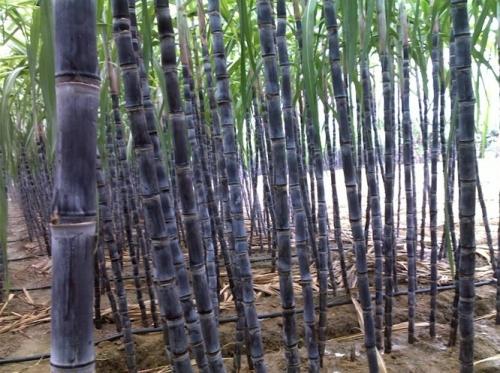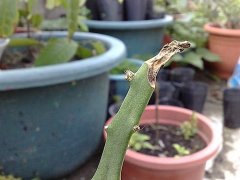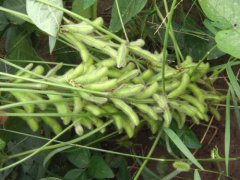How does sugar cane grow well? When is the best time to plant sugar cane?
Sugar cane is a common fruit. Do you want to grow it yourself? If you want, let's take a look together! This kind of planting method is similar to bamboo planting technology!
Sugarcane is less selective about soil and can be grown on anything from loose gravel to sticky clay. Sugarcane belongs to hot, subtropical crops, growth like high temperature, rain and sunshine, but not suitable for soaking, and must be in low temperature to mature, and accumulate various carbohydrates converted into sucrose.
Sugarcane is a perennial herb, although it will flower for sexual reproduction, but mostly planted by asexual bud propagation.
Planting period can be divided into autumn planting, spring planting and perennial root 3 kinds. Autumn plants are planted from July to September and grow for about 18 months. Spring planting takes about 1 - 3 months and the growing period is about 12 months. After harvesting, the ratoon sprouts and grows for about 12 months. The harvest period is from November to April of next year.
Sugarcane seedlings will grow out of sugar cane when they are slightly larger, and seedlings will grow around the mother plant like bamboo and banana. The immature sugarcane is dark black, and the leaves are wrapped around it; when it grows up, the leaves will slowly fall off and accept the baptism of the sun. The torso changes from dark black to purple.
Sugar cane has antipyretic thirst, and in the wide diaphragm, Shengjin Runzao, help spleen and stomach, diuretic, nourishing effect. Can be used for dry mouth, body fluid deficiency, dysuria, constipation, nausea and vomiting, indigestion, fever and thirst. It is best to drink raw cane juice for hot diseases, which is referred to as "natural pulse recovery soup."
Sugar cane contains carbohydrates, protein, fat, calcium, phosphorus and iron. Stem nodes contain vitamin B6, stem ends contain vitamins B1 and B2. Sucrose mainly contains sucrose, glucose and fructose. Sugarcane juice contains aspartic acid, alanine, valine, serine, malic acid, citric acid and other amino acids, are quite beneficial to human health.
Sugar cane juice boiling heat will turn warm, it has tonic effect, with qi and spleen, and middle and lower qi, nourishing health care functions.

- Prev

Where is the origin of Huanglongguo? Huanglongguo is a good cultivation method with that kind of drilling wood grafting.
Pitahaya Amarilla, also known as Huanglongguo, is distributed in Colombia, Ecuador, Peru and Bolivia. Because the fruit is fine, sweet and succulent, it can be regarded as the best in the world of dragon fruit, but its ripening period is two or three times longer than that of ordinary dragon fruit.
- Next

What are the varieties of soybean green manure? Tainan 4 Soybean and Tainan 7 Soybean
Soybeans are often seen in our lives. This agricultural product is used for many of our agricultural and sideline products, so this product is a very valuable crop! Here are two soybean varieties. It's not the same as lentils, but it's kind of
Related
- The first cup of black tea in spring, the flavor and history of tea gardens in Kenya, Africa
- The computer can not only choose potatoes, but also grow tea rice. AI will grow winter oolong tea champion.
- It is not only the inflated tea bitten by insects, but also engraved with the four seasons tea in Beipu.
- The Oriental Beauty Tea Festival in Zhuxian County takes the stage at the weekend to experience the plus-size feast of oil tea.
- & quot; Oriental Beauty Tea & Exploration of Emei in Hsinchu, the hometown of quot;
- The new variety of strawberry "Tainong 1" dessert is the first choice with mellow aroma. Crimson gorgeous
- History of Tea in Taiwan: from Wild Inner Mountain to Export Tea Garden
- Two types of Taiwan Oriental Beauty Black Tea won the British three-Star Award for Childhood Tea Xiang Zhang Jiaqi changed from pilot to champion tea maker.
- Banana species and varieties: the planting history of Taiwan Xianren banana and dwarf banana is long, is banana disease resistant?
- Coffee planting Technology: Qianjie Coffee from Seedling to harvesting

